Biomes
Definition
Biomes (bai-owmz), also known as major life zones, are divisions of Earth’s terrestrial and aquatic environments. A biome is a large community of plants and animals living in specific abiotic conditions, like climate and soil conditions.[1] Biomes are made up of various communities of flora and fauna but are classified based on the dominant vegetation of the area.[2][3] The five main types of biomes are deserts, grasslands, forests, tundra, and aquatic, but these biome types can be further broken down to represent more specific characteristics and conditions.[1] All the biomes on Earth make up the biosphere.[5]
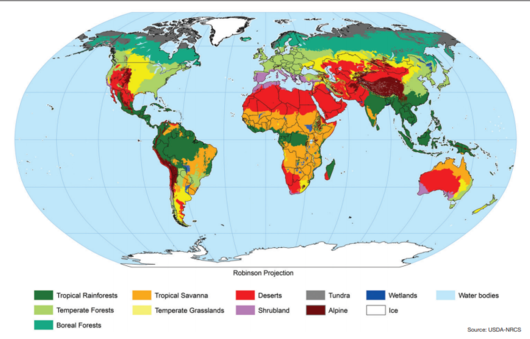
Determining Factors
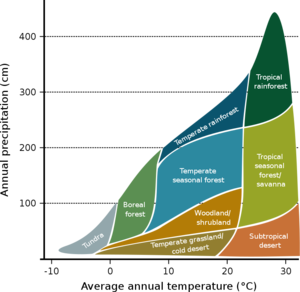
While biomes are typically classified based on the predominant vegetation of the area, vegetation is not the only factor that determines a biome. There are a number of different abiotic factors that can have an influence on the biome type, but the main determining factor is the climate, specifically the temperature and precipitation of an area.[4] Temperature and precipitation play an important role in dictating the animals and plants that are in a specific area.[4] Variations in the precipitation and temperature conditions can lead to substantial differences in the vegetation which results in all the unique biomes we see today.
While climate has a major influence on the biomes, it is not the only abiotic factor that plays a role in determining the type of biome. Another important factor that determines biome type is the latitudinal location of the biome.[6] Latitudinal location and climate are interconnected drivers because the amount of sunlight varies with latitude which effects the temperature, precipitation, and by extension the type of life that can inhabit that location.[6] For example biomes found in lower latitudes are typically characterized by higher temperatures and higher precipitation.[6]
Biomes are complex systems that have many other factors that have an influence on them. Some of these other factors include, but not limited to, soil moisture, nutrients, water availability, disturbances, and length of growing season.[5][6] All of these abiotic conditions dictate what organisms will persist in those conditions, which defines the specific biome.
Biomes of the World
The term “biome” has had many different definitions and classifications since its first use in 1916 by Fredrick Clements.[5][7] Over the years the term has changed, being both expanded and refined, leading to different classifications and specific biome types.[7] Below are the 6 major types of biomes which can be further divided into more specific biomes that represent more specific conditions, including temperature, precipitation, seasonality, and soil condition .
Terrestrial Biomes
Desert
desert biomes are characterized by low precipitation and extreme temperatures, both hot and cold temperatures, and cover about 20% of earth’s surface.[1] The rainfall in desert biomes are typically lower than 50 cm per year.[1][8] Both plants and animals in this biome are adapted to the low precipitation and extreme temperatures. The predominant vegetation in desert biomes are typically low, ground-hugging shrubs and grasses which are able to thrive in the low water environment.[8] There are four types of desert biomes which share these general characteristics but also have certain aspects that distinguish them.[8] the four types of desert are:
- Hot and dry deserts
- Semiarid deserts
- Coastal deserts
- Cold deserts
Soils in desert biomes can be sandy, stony, or consist of gravel depending on the specific type of desert.[12] The lack of available water plays an important part in the soils of desert biomes. Desert soils are not abundant in nutrients because the dry environment limits the amount of weathering which breaks down soil particles into essential nutrients and minerals.[13] Deserts also do not have a large amount of organic matter in the soils because of the lack of productivity from the limited plant community.[8] These factors result in the poor and unproductive conditions of desert soils.
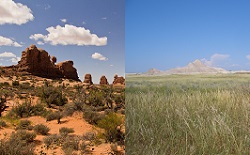
Grasslands
Grassland biomes are widespread and found on almost every continent, excluding Antarctica.[7] This biome is described as open and flat land that is dominated by grasses with little to no trees.[7] The climate of grassland biomes are typically characterized by warmer temperatures and increased precipitation, compared to desert biomes.[9] another defining characteristic of grasslands is seasonal droughts and disturbances, such as fires, which promote the growth and success of grasses and benefits biodiversity.[9] Grasslands can be divided into two categories:
- Tropical grasslands (Savannahs)
- Temperate grasslands (includes parries and steppes)
The two distinct groups of grassland biomes, tropical grasslands and temperate grasslands, have widely different soil conditions. The soils of tropical grasslands are porous and experiences a lot of leaching due to the increased precipitation rates.[9] The porous soil contributes to the lack of nutrients and organic matter found in the soil because the precipitation moves through the soil with ease and takes the nutrients along with it, resulting in low nutrients and a small organic layer in the soil.[9] Temperate grassland soils differ from tropical grasslands and are described as deep, dark-colored, nutrient rich soils with the upper soil layers being extremely fertile.[9] Temperate grasslands receive less precipitation than tropical ones which reduces the amount of nutrients that are leached through the soil. Decomposition also plays an important role in the differences between grassland soils. Tropical forests experience partial decomposition while temperate ones have higher decomposition which contributes to the higher nutrient content of temperate grassland soils.[9]
Forests
Forest biomes constitutes about 1/3 of the earth’s surface and hosts majority of the biodiversity found in terrestrial biomes.[1][10] All forest biomes share the same dominant vegetation which is made up of trees and other woody plants, although forests have a wide range of climate conditions in which they can be found in. Forests can be found in the warm, moist tropics, moderate climate conditions of temperate environments, and even in cold and snowy northern latitudes.[10] The difference in environmental conditions of the various forests allows for forests to be categorized in a number of different ways, such as latitude, temperature and precipitation, and seasonality.[10] Below are the three major types of forests, categorized by latitude, but each of these forest types can be diverged into more specific classes:
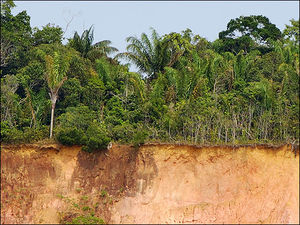
- Tropical forests
- Temperate forests
- Boreal forests (Taiga)
Forest biomes have a wide distribution and inhabit a range of unique environmental conditions, including soil conditions. Tropical forests have soils that are nutrient-poor and acidic, both which are results of intense precipitation.[10] The rain leaches through the soil and deprives the soil of nutrients and the loss of nutrients leads to the acidic nature of the soils. Tropical forests also have a fast decomposition rates which prevents organic matter and nutrients from building up in the soil, leaving it nutrient poor.[10] Conversely, temperate forests have nutrient rich soils which comes from the decomposition of organic material and plant litter.[10] The seasonality of temperate forests contributes to the rich soils because many of the trees loose their leaves for the winter, which provides decomposers with a food source that is broken down into soil nutrients. The soil of boreal forests have its own unique characteristics that separates it from tropical and temperate forests. Boreal forest soils are lacking in nutrients, acidic, and relatively thin.[10] The cold temperatures causes lower decomposition rates which limits the amount of nutrients in the soil. The leaves from the predominant vegetation of boreal forests, needle-leaf conifers, fall and the acidic compounds leaches into the soil and changes the pH to be more acidic. [14]
Tundra
The tundra biome is coldest and least diverse of all the major biomes.[11] The tundra biome is characterized by extremely low annual temperatures, lower than any other biome, and low precipitation, producing a cold, dry, and inhospitable environment.[1] These intense conditions limit the kinds of life that can occupy the tundra because only species that are adapted to the extreme cold, dry conditions, and short growing seasons.[7]
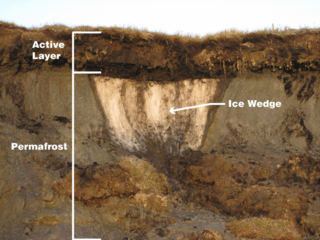
Although the tundra is known for its lack of biodiversity there are still organisms that call this biome home. There is not many different types of vegetation in this biome, due to the harsh growing conditions, but the vegetation that does reside here are rather simple, including mosses, lichens, grasses, and some shrubs.[1] There are two types of tundra biomes that are found on Earth:
- Artic tundra
- Alpine tundra
Tundra biomes do not have great soil conditions which also contributes to the low biodiversity. Tundra soils are defined by the lack of soil nutrients and the frozen layer of soil known as permafrost.[11] the lack of soil nutrients, notably nitrogen and phosphorus, leads to poor soil conditions which limits the vegetation that can grow there.[11] the frozen layer of permafrost also contributes to the poor soil conditions by locking up vital nutrients and organic matter which prevents vegetation from reaching these essential components.[11]
Aquatic biomes
While terrestrial biomes are typically categorized by their dominant plant life, aquatic biomes are not defined by the dominant vegetation, which is much harder to find in aquatic ecosystems, and thus leads to aquatic biomes being classified by other components, such as salinity, depth, temperature, sunlight, and more.[7]
Marine
Marine biomes are very diverse and unique systems that make up about three fourths of Earth’s total surface.[15] One of the defining factors of marine biomes is the salt content. Marine biomes have a higher salt content than freshwater biomes.[7] The marine biome is extremely important because not only does it act as a sink for atmospheric carbon, but marine algae are responsible for producing a large amount of the world oxygen supply.[15] Marine biomes can be further broken down into:
- Oceans
- Coral reefs
- Estuaries
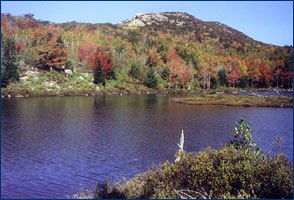
Freshwater
Freshwater biomes are aquatic systems that are surrounded by land and contain on average less than 1% salt content.[16] Freshwater biomes can be either standing water or running water. The close proximity of freshwater biomes to terrestrial biomes means that these systems are connected by similar biotic and abiotic factors and can influence one another.[4] Types of freshwater biomes include:
- Lakes and ponds
- Rivers and streams
- Wetlands
Human Influence & Global Change
Human activities can have a major influence on the distribution and environmental conditions of both terrestrial and aquatic biomes. Biomes have been disturbed, reduced, and altered over the course of human history. Humans have altered natural biomes so significantly that the term “anthromes” has been used to describe human created biomes, such as agricultural farmlands and urban environments.[17] In addition to directly disturbing biomes, human-driven climate change is going to alter temperature, precipitation, and other climatic conditions around the world impacting vegetation and entire biomes. Biomes are expected to shift in response to changing climatic conditions, such as temperature and precipitation.[19]
Deserts
Desert biomes are expected to expand in response to climate change and human activities. Desertification describes the encroachment of desert environments into other biomes and is driven by a number of different factors, including deforestation, overgrazing, harmful agricultural practices, and changing climates.[20] variations in precipitation and temperatures can lead to a reduction in plant life, drying and erosion of soils, and droughts which drives the expansion of deserts.[20]
Grasslands
Grassland biomes have been significantly affected by humans in a number of ways. Human expansion and the development of urban and agricultural areas has changed the landscape and altered the biotic communities resulting in reductions to the extent of grassland biomes.[18] Climate change is going to dramatically shift grassland biomes toward the poles as grasses follow hospitable climate conditions.[19]
Forests
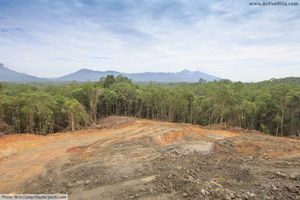
Forest biomes have experience extreme pressure from humans in the form of deforestation, which decimates large portions of forest for a number of reasons including resources and agricultural expansion.[ 21] Climate change will have significant effects on forest biomes. Trees that make up the various forest biomes will shift towards more favorable climates, shifting biomes toward the poles, and extreme weather events like droughts and flooding will impact forests.[22] Invasive species and pests are other issues that can weaken forests and reduce the extent of forest biomes.[22]
Tundra
Tundra biomes are extremely sensitive to both climate change and human activities. One of the greatest threats to tundra biomes is the increase in temperatures and melting of permafrost due to anthropogenic climate change.[23] thawing of permafrost releases methane and other greenhouse gases that creates a positive feedback loop, perpetuating the rise in temperatures.[23] The plant and animals that inhabit tundra biomes are specifically adapted to colder weather and thus an increase in temperatures can destabilize the tundra communities and force the organisms to adapt or die out. Tundra biomes take a long to repair themselves from disturbances which also highlights the sensitivity of this biome to perturbations and environmental changes.[23]
Aquatic
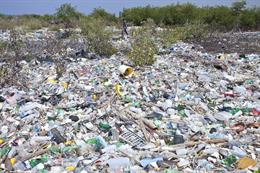
Aquatic biomes have their own set of disturbances that threaten the stability and functioning of the biomes. Both freshwater and marine biomes are at risk of severe impacts from humans and climate change alike, although the exact impacts will vary due to the unique conditions of each aquatic biome. The threats towards marine biomes include ocean acidification and rising sea temperatures which can impact the marine life due to changing environmental conditions.[24] This impact is especially seen in coral reef environments in which corals are bleaching and dying at an alarming rate because they cannot cope with the changing conditions. Freshwater biomes are also expected to be influenced by climate change. Increased temperatures and precipitation can lead to both droughts and floods which directly impact the entire biome.[25] The effect humans have on these aquatic biomes include pollution, overuse, and harmful invasive species.[24][25] Pollution and overfishing are two major impacts from humans that can significantly affect the dynamics of these biomes.[24][25] Runoff is a major source of pollution, specifically chemicals and excess nutrients, for both marine and freshwater systems.[26][27]
References
[1] National Geographic Society. (2020) Biome. https://www.nationalgeographic.org/encyclopedia/biome/
[2] UC Museum of Paleontology (2019) The world’s biomes. University of California, Berkley. https://ucmp.berkeley.edu/exhibits/biomes/index.php
[3] Augustyn, Adam. "Biome". Encyclopedia Britannica, 18 Feb. 2020, https://www.britannica.com/science/biome. Accessed 1 May 2021.
[4] Carter, S. Introductions to Biomes. Lumen Learning. https://courses.lumenlearning.com/suny-wmopen-biology2/chapter/biomes/
[5] Mucina, L. 2019. Biome: evolution of a crucial ecological and biogeographical concept. New Phytologist 222:97–114.
[6] Hain, T. (2019). The link between biomes and climate. The Thought Co. https://www.thoughtco.com/what-are-biomes-1435312
[7] National Geographic Society. (2019). What makes a biome? https://www.nationalgeographic.org/article/what-makes-biome/?utm_source=BibblioRCM_Row
[8] UC Museum of Paleontology (2019). The desert biome. https://ucmp.berkeley.edu/exhibits/biomes/deserts.php
[9] UC Museum of Paleontology (2019). The grassland biome. https://ucmp.berkeley.edu/exhibits/biomes/grasslands.php
[10] UC Museum of Paleontology (2019). The forest biome. https://ucmp.berkeley.edu/exhibits/biomes/forests.php
[11] UC Museum of Paleontology (2019) The tundra biome. https://ucmp.berkeley.edu/exhibits/biomes/tundra.php
[12] National Geographic Society. (2020). Desert biome. https://www.nationalgeographic.org/encyclopedia/desert-biome/#:~:text=This%20biome%20has%20a%20layer,have%20adaptations%20to%20conserve%20water.
[13] Sindelar, M. (2015). soils protect the natual enviroment. Soil Science Society of America. https://www.soils.org/files/sssa/iys/september-soils-overview.pdf
[14] Regional Aquatics Monitoring Program. The physical environment. http://www.ramp-alberta.org/river/boreal/canada/physical+environment.aspx#:~:text=Soils%20in%20the%20boreal%20forest,acidic%2C%20and%20poor%20in%20nutrients.
[15] UC Museum of Paleontology (2019). The marine biome. https://ucmp.berkeley.edu/exhibits/biomes/marine.php
[16] UC Museum of Paleontology (2019). The freshwater biome. https://ucmp.berkeley.edu/exhibits/biomes/freshwater.php
[17] Ellis, E.C. & Ramankutty, N. (2008) Putting people in the map: anthropogenic biomes of the world. Frontiers in Ecology and the Environment, 6, 439–447
[18] Carr, K. (2018). What Are the Impacts of Humans on Grassland Biomes? Sciencing. https://sciencing.com/effects-of-land-clearing-13406919.html
[19] Buis, A. (2011). Climate change may bring big ecosystem changes. NASA. https://climate.nasa.gov/news/645/climate-change-may-bring-big-ecosystem-changes/
[20] McSweeny, R. (2019). Explainer: ‘Desertification’ and the role of climate change. https://www.carbonbrief.org/explainer-desertification-and-the-role-of-climate-change
[21] Understanding the different types of biomes. Kent State University. https://onlinedegrees.kent.edu/geography/geographic-information-science/community/biomes-types-and-human-impact#:~:text=The%20forest%20biome%20most%20at,already%20contributed%20to%20global%20warming.
[22] Climate impacts on forests. (2017). United States Environmental Protection Agency. https://19january2017snapshot.epa.gov/climate-impacts/climate-impacts-forests_.html
[23] Nunez, C. (2020). Tundra threat explained. National Geographic Society. https://www.nationalgeographic.org/article/tundra-threats-explained/#:~:text=Air%20pollution%20affects%20tundra%20environments%20in%20different%20ways.&text=And%20toxic%20mercury%2C%20sent%20into,important%20food%20source%20of%20lichen.
[24] National Geographic Society. Ocean threats. https://www.nationalgeographic.com/environment/article/ocean-threats#:~:text=Global%20warming%20is%20causing%20sea,kills%20marine%20plants%20and%20shellfish.
[25] National Geographic Society. Freshwater threats. https://www.nationalgeographic.com/environment/article/freshwater-threats
[26] National Geographic Society. Marine pollution. https://www.nationalgeographic.org/encyclopedia/marine-pollution/#:~:text=Marine%20pollution%20is%20a%20combination,and%20to%20economic%20structures%20worldwide.
[27] Pollution Issues. Water pollution: freshwater. http://www.pollutionissues.com/Ve-Z/Water-Pollution-Freshwater.html#:~:text=Freshwater%20pollution%20is%20the%20contamination,sediment%2C%20or%20even%20heated%20discharges.